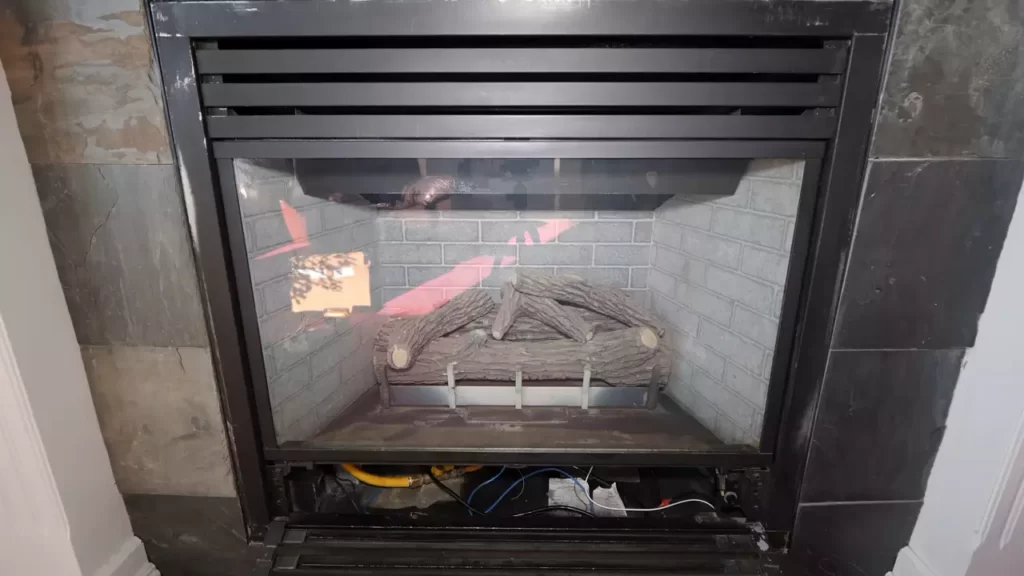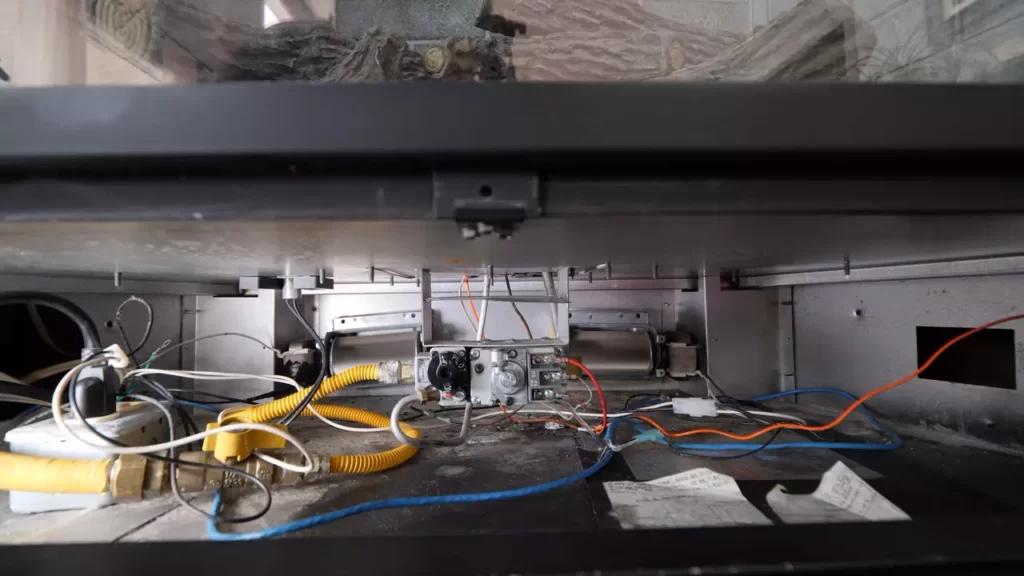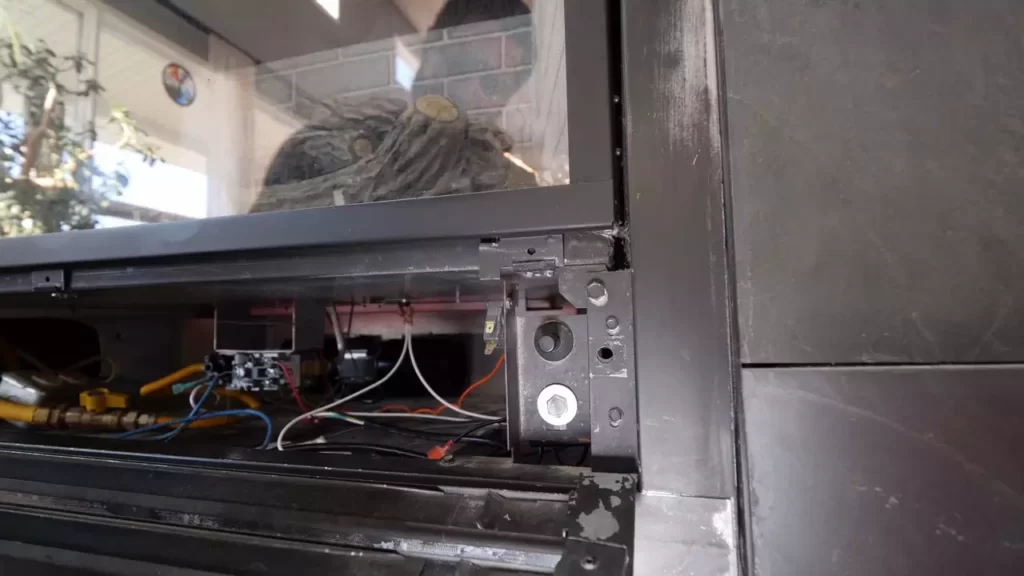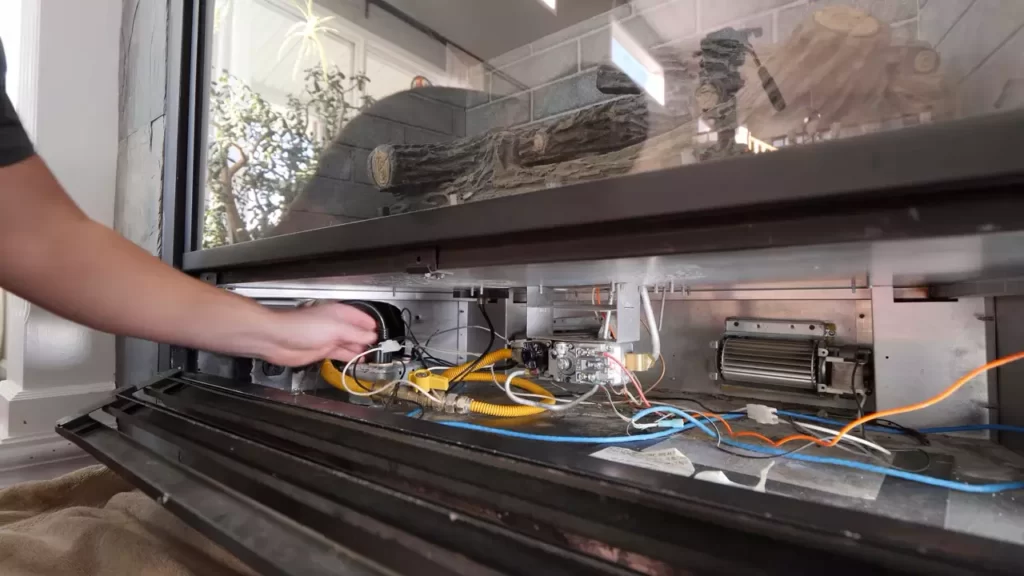To install a fireplace blower, first, disconnect the power supply and remove the fireplace grate. Then, attach the blower to the blower brackets and secure it using screws.
Benefits Of Installing A Fireplace Blower
Benefits of Installing a Fireplace Blower
Installing a fireplace blower can significantly enhance your fireplace’s performance and make your home more comfortable during those chilly winter nights. With a fireplace blower, you can experience increased heat circulation, improved energy efficiency, and an overall cozy atmosphere that will make your fireplace the heart of your home.

Increase Heat Circulation
One of the key benefits of installing a fireplace blower is the increased heat circulation it provides. Instead of allowing the heat produced by your fireplace to gather around the immediate area, a blower can distribute the warmth evenly throughout the room. The blower draws in cool air from the room, passes it over the hot fireplace insert or stove, and then blows the heated air back out into the room. This process helps to eliminate cold spots and ensures that every corner of the room receives the desired warmth.
Improve Energy Efficiency
By installing a fireplace blower, you can also improve the energy efficiency of your fireplace. Without a blower, much of the heat generated by your fireplace can be lost through the chimney or wasted by staying concentrated around the firebox. However, with the inclusion of a blower, the heated air is forced out into the room, allowing you to maximize the warmth while reducing the need for additional heating methods. This not only improves your comfort but also helps to reduce energy costs.
Enhance Overall Comfort
The installation of a fireplace blower can transform your fireplace into a true source of comfort. With the increased heat circulation and improved energy efficiency, you can experience a cozy and inviting atmosphere throughout your living space. Whether you are entertaining guests or simply enjoying a quiet evening at home, a fireplace blower can provide the ideal balance of warmth and ambiance. Additionally, the consistent warmth provided by the blower ensures that you can comfortably relax and enjoy the fire without feeling too hot or too cold.
In conclusion, the benefits of installing a fireplace blower are undeniable. Not only does it increase heat circulation and improve energy efficiency, but it also enhances overall comfort and makes your fireplace the focal point of your home. So, if you’re looking to improve the performance of your fireplace and enjoy a cozy and inviting atmosphere, consider installing a fireplace blower today.

Considerations For Selecting A Suitable Blower
Installing a fireplace blower can greatly enhance the functioning of your fireplace, providing you with a more efficient and effective heating solution. However, with numerous options available, it’s crucial to choose a blower that is suitable for your specific fireplace. Here are some key considerations to keep in mind when selecting a blower:
Fireplace Type and Size
The first and foremost consideration when selecting a suitable blower is the type and size of your fireplace. Fireplaces come in various types such as wood-burning, gas, or electric, and each requires a specific type of blower. Additionally, the size of your fireplace plays a significant role in determining the appropriate blower capacity. A larger fireplace may require a higher-powered blower, while a smaller one can suffice with a lower-powered option.
Heat Output and Blower Capacity
Another important factor to consider is the heat output of your fireplace and its compatibility with the blower’s capacity. Fireplaces differ in their heat output, which is typically measured in BTUs (British Thermal Units). It’s essential to match the blower’s capacity, which is also measured in cubic feet per minute (CFM), with the heat output of your fireplace. Ensure that the blower has the ability to effectively distribute the heat generated by your fireplace.
Blower Installation Compatibility
When selecting a blower, it’s vital to verify its compatibility with your fireplace’s installation requirements. Different fireplaces have varying installation setups, and it’s necessary to choose a blower that aligns with your fireplace’s design and configuration. Some blowers are designed specifically for insert-style fireplaces, while others are suitable for traditional masonry fireplaces. Make sure the blower you select is compatible and can be easily installed without any major modifications or complications.
By considering these important factors, you can ensure that the blower you select for your fireplace is the perfect fit. Take into account the type and size of your fireplace, match the heat output with the blower’s capacity, and ensure installation compatibility. Choosing the right blower will not only enhance the efficiency of your fireplace but also provide you with a cozy and comfortable atmosphere during those colder months.
Step-By-Step Guide To Installing A Fireplace Blower
Are you tired of not feeling enough heat from your fireplace? Installing a fireplace blower can solve this problem, as it helps to distribute warm air generated by the fire throughout the room. The good news is that you can easily install a fireplace blower in just a few simple steps. In this step-by-step guide, we will walk you through the process, from gathering the necessary tools and materials to testing the blower for proper functionality.

Gathering necessary tools and materials
The first step in installing a fireplace blower is to gather all the necessary tools and materials. Here’s a list of what you’ll need:
| Tools: | |
| – Screwdriver | |
| – Drill | |
| – Wire cutter/stripper | |
| – Pliers | |
| Materials: | |
| – Fireplace blower kit (including blower, brackets, and screws) | |
| – Electrical wire | |
| – Wire connectors | |
| – Electrical tape |
Preparing the fireplace for installation
Once you have gathered all the necessary tools and materials, it’s time to prepare the fireplace for the installation of the blower. Follow these steps:
- Clean the fireplace thoroughly, removing any debris or ashes.
- Locate the outlet on the fireplace where the blower will be installed.
- Attach the brackets to the blower using the screws provided in the kit.
- Place the blower in the desired location, making sure it is secure.
Connecting the blower to the electrical system
Now that the fireplace is prepared, it’s time to connect the blower to the electrical system. Here’s how:
- Turn off the power supply to the fireplace.
- Drill a small hole near the outlet on the fireplace.
- Thread the electrical wire through the hole.
- Strip the ends of the wire and connect them to the blower’s motor using the wire connectors.
- Secure the wire with electrical tape to prevent any accidental disconnection.
Securing the blower in place
With the blower connected to the electrical system, the next step is to secure it in place. Follow these steps:
- Tighten the screws on the brackets to secure the blower firmly.
- Check the blower’s position to ensure it is aligned correctly.
Testing the blower for proper functionality
The final step in installing a fireplace blower is to test it for proper functionality. Here’s what you should do:
- Turn on the power supply to the fireplace.
- Switch on the blower and listen for the sound of the motor running.
- Feel for warm air being distributed from the blower vents.
- If the blower is functioning properly, you’re all set! Enjoy the warmth and comfort of your fireplace.
Installing a fireplace blower is a simple and effective way to enhance the heat output of your fireplace. By following this step-by-step guide, you can enjoy a warmer and cozier environment in no time.

Tips For Keeping Your Blower In Optimal Condition
Proper maintenance of your fireplace blower is essential for ensuring it operates efficiently and effectively. Regular cleaning, lubrication of moving parts, checking for signs of wear or damage, and scheduling an annual inspection with a professional are all key steps in keeping your blower in optimal condition.
Regular cleaning and dust removal
Cleaning your fireplace blower on a regular basis is important to remove any built-up dust and debris that can hinder its performance. Start by unplugging the blower from the power source and carefully remove it from the fireplace. Using a soft brush or a cloth, gently brush away the dust from the blower and its components. Pay special attention to the fan blades and motor housing. Avoid using water or any liquid cleaners as they can damage the blower. Once cleaned, reattach the blower to the fireplace and plug it back in.
Lubrication of moving parts
Keeping the moving parts of your fireplace blower well-lubricated ensures smooth operation and prolongs its lifespan. Before lubricating, make sure the blower is disconnected from the power source. Use a high-quality lubricating oil or spray and apply it to the bearings and shaft of the blower motor. Be sure to follow the manufacturer’s instructions for the appropriate lubrication method and frequency.
Checking for any signs of wear or damage
To maintain the optimal condition of your fireplace blower, it’s crucial to regularly inspect it for any signs of wear or damage. Look for frayed wires, loose connections, or any unusual noises during operation. If you notice any problems, it’s important to address them promptly to prevent further damage or potential safety hazards. In case of significant wear or damage, consult a professional technician for repair or replacement.
Annual inspection by a professional
Regardless of how well you maintain your fireplace blower, it’s advisable to have it professionally inspected at least once a year. A trained technician can perform a comprehensive inspection to identify any hidden issues and ensure that all components are in proper working order. This annual inspection will help maintain your blower’s optimal performance, efficiency, and safety.
By following these tips for keeping your blower in optimal condition, you can enjoy the benefits of a well-functioning and efficient fireplace. Regular cleaning, lubrication, thorough inspection, and professional maintenance will not only extend the lifespan of your blower but also provide you with a cozy and comforting warmth during the colder months.
Frequently Asked Questions Of How To Install A Fireplace Blower
Can You Add A Blower To An Existing Fireplace?
Yes, it is possible to add a blower to an existing fireplace to improve its heating efficiency.
How Much Does It Cost To Install A Fireplace Blower?
The cost of installing a fireplace blower varies depending on the type and size of the unit. On average, homeowners can expect to pay between $200 and $500 for installation. However, it’s best to consult with a professional to get an accurate cost estimate based on your specific needs and requirements.
How Do You Install A Wooden Fireplace Blower?
To install a wooden fireplace blower, follow these steps: 1. Ensure the fireplace is turned off and cool. 2. Remove the fireplace grate and set it aside. 3. Attach the blower to the mounting bracket. 4. Connect the blower to an electrical outlet.
5. Place the grate back in the fireplace. You’re done! Your wooden fireplace blower is now installed and ready to use.
Does The Blower Need To Be On With Fireplace?
No, the blower is not required to be on with the fireplace. It is an optional feature designed to distribute heat more efficiently throughout the room. The fireplace can still operate without the blower, but the heat will be localized.
Conclusion
To sum up, installing a fireplace blower can greatly enhance the efficiency and effectiveness of your fireplace. By following the step-by-step guide provided in this blog post, you can successfully install a blower without any hassle. The added benefit of increased heat distribution can make your living space more comfortable and reduce energy costs.
So, don’t hesitate to take this DIY project and enjoy the cozy warmth of your fireplace all winter long!
